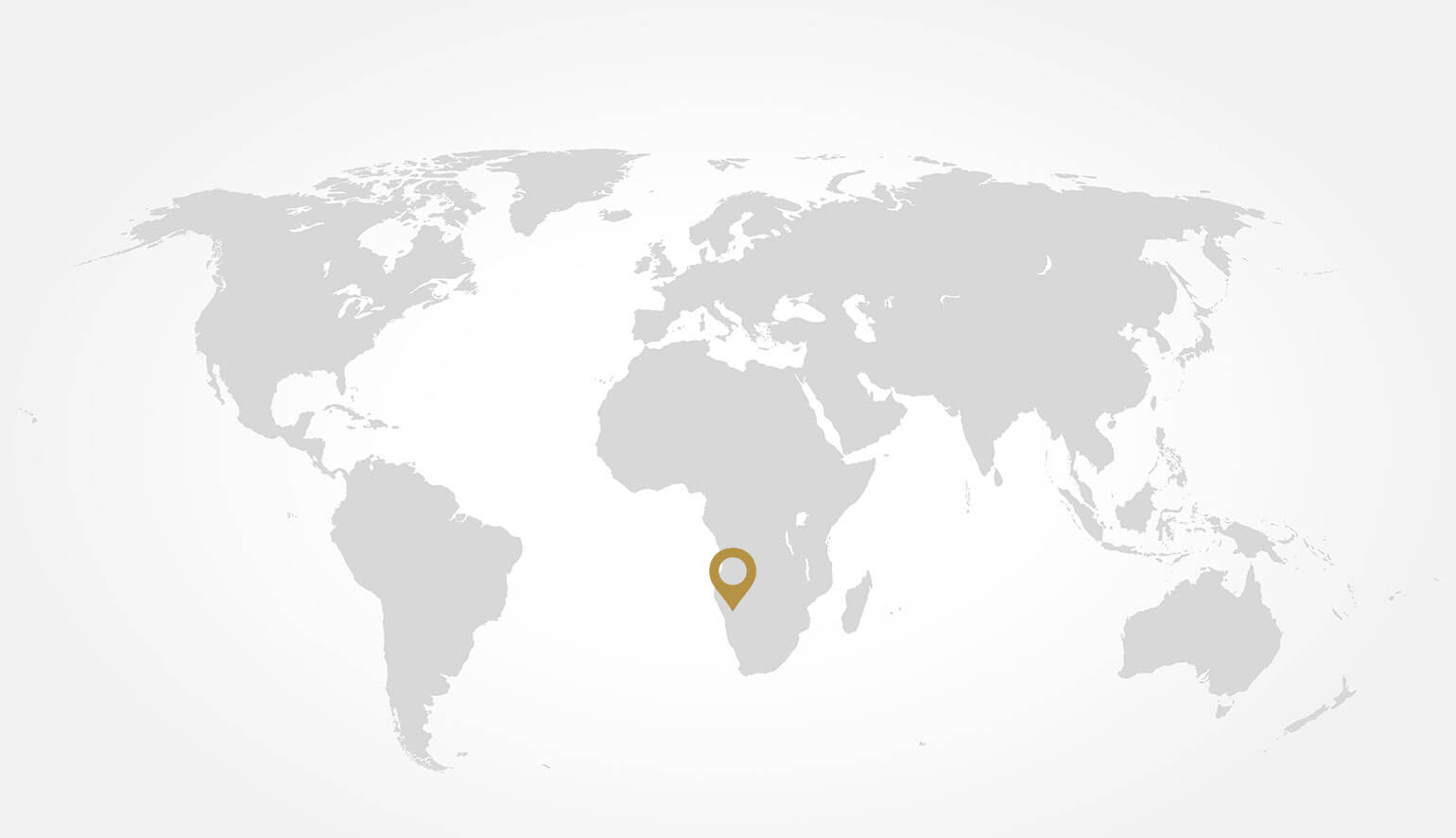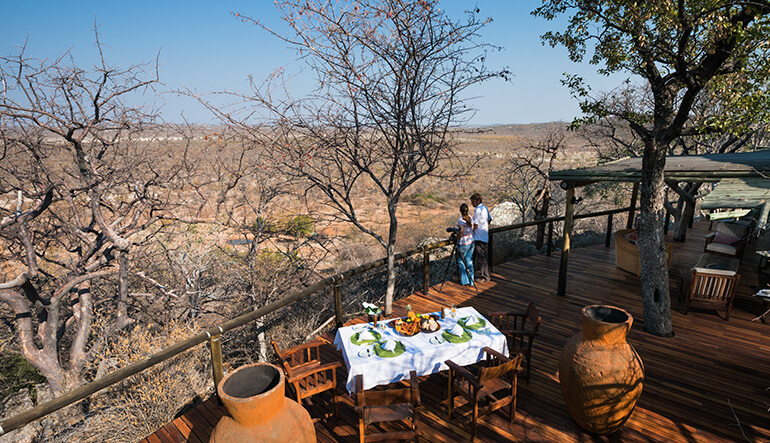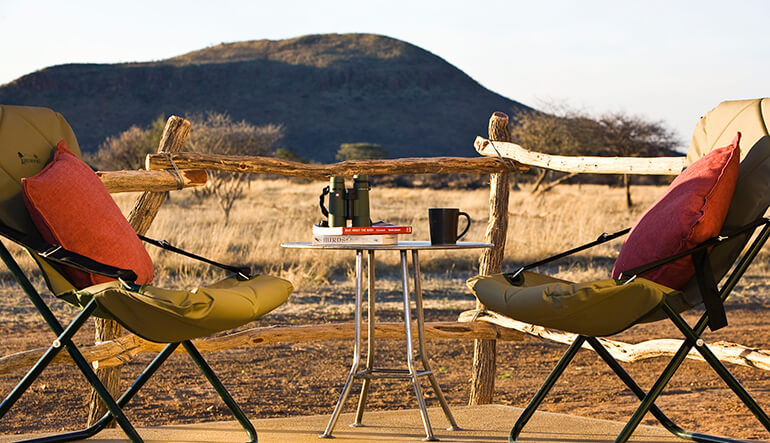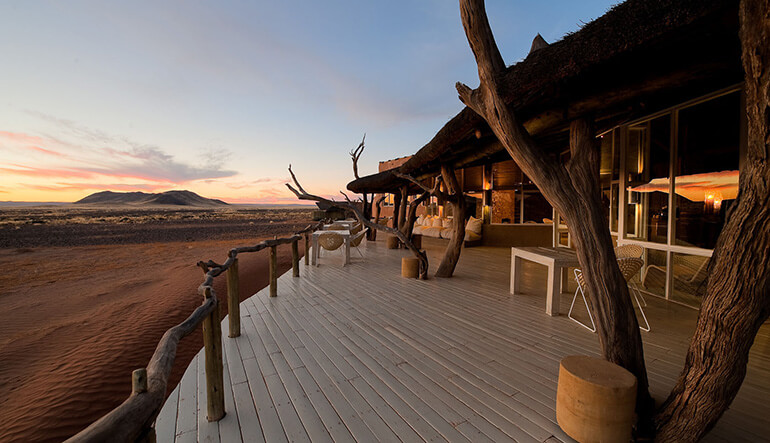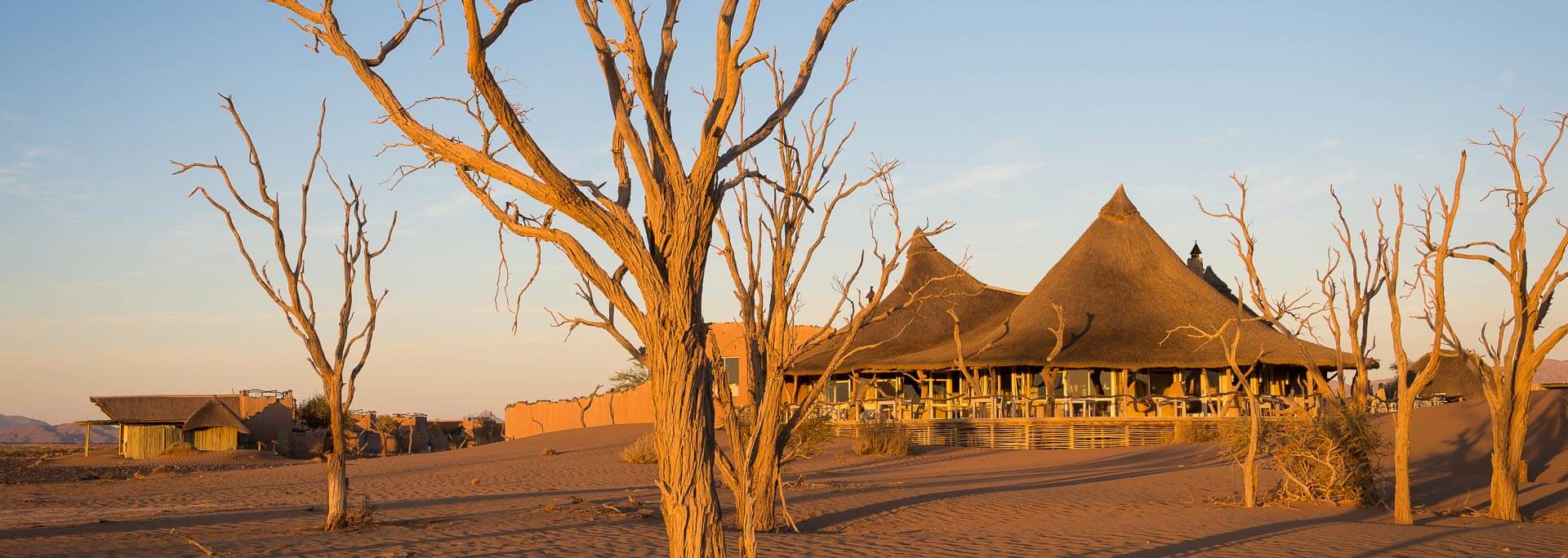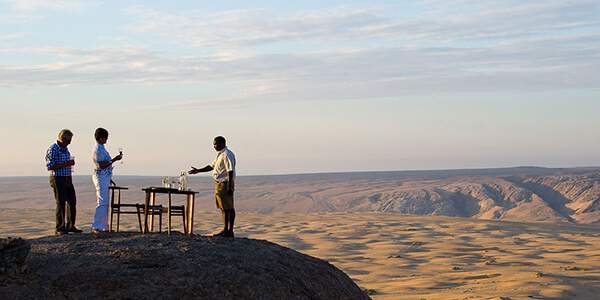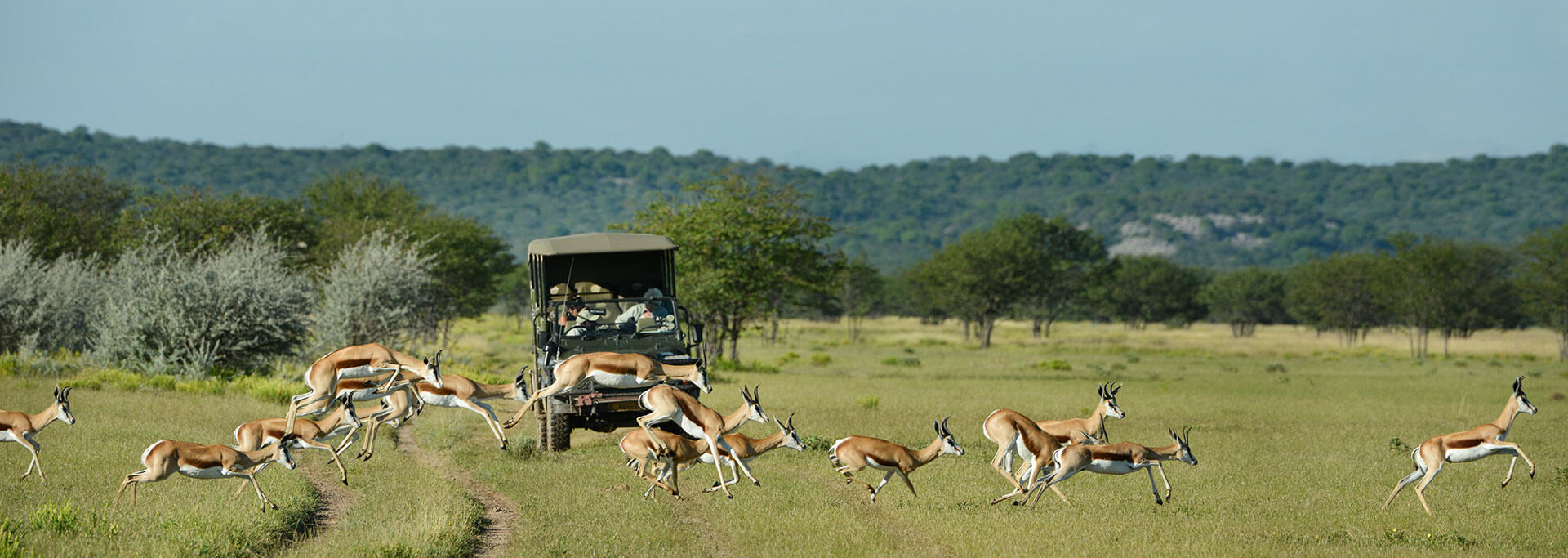Namibia

Namibia is a land of contrasts, where cobalt blue skies meet the burnt orange desert sands of the country’s four deserts.
Travellers can witness the majesty of free-roaming wildlife across vast and varied landscapes and, with famous attractions such as Spitzkoppe, Epupa Falls, Etosha National Park and the petrified trees of Sossusvlei, there is something to enjoy in every corner of this ruggedly beautiful country.
Why Travel to Namibia
Home to some of the rarest wildlife in Southern Africa, a trip to Namibia is all about the animals. Spot the elusive African wild dog (painted wolf) and the desert-adapted Oryx (Gemsbok), or look out for the rare marsh-dwelling Oribi, Puku and Sitatunga antelope in the Caprivi Strip.
Namibia’s landscape ranges from vast deserts peppered with sleepy ghost towns where wild horses still run free to the lush wetlands of the Caprivi Strip. Here the Kwando, Zambezi, Chobe and Okavango rivers create a unique ecosystem that is home to over 430 bird species, rare wildlife and exciting cultural villages.
Enjoy game viewing on a sunset river cruise, explore the majestic Etosha National Park on a safari game drive, or soar over Namibia’s impressive geological formations on a sunrise hot air balloon ride.
Fun Facts
Affectionately known as one of Southern Africa’s best-kept secrets, this country with the same landmass as Germany boasts a population of a mere 2-million people, making it the ideal destination to take your time exploring.
More cheetahs live in Namibia than anywhere else in Africa. The country is home to the largest free-roaming population of these big cats, however, most visitors usually spot them in Etosha National Park.
The Namib Desert stretches for 81 000 km², and at 50 million years old, it has earned itself the title of ‘the oldest desert in the world.’
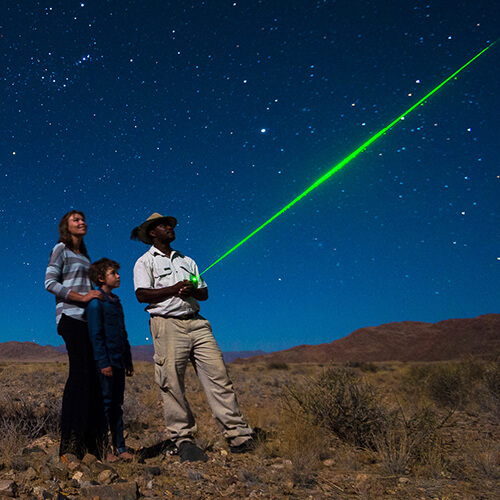
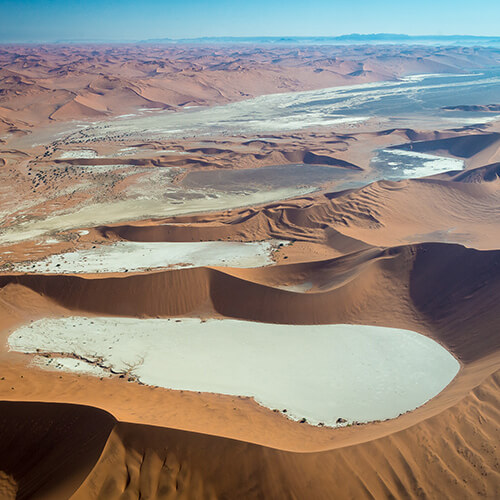
About Namibia

From moon-like desert landscapes to verdant waterways, game viewing opportunities and activities in Namibia are as varied as they are endless.
This rugged, rustic and largely unexplored wilderness provides travellers with a variety of striking and secluded accommodation options and a one-of-a-kind off-the-beaten-track African safari experience that is guaranteed to leave you wanting more.

Topography
Namibia’s landscape is incredibly varied, with four distinct regions. A whopping 64% of the country is made up of four deserts – the Kalahari, the Karoo, the Succulent Karoo and the world’s oldest desert, the Namib. The four main regions that make up the country are the central plateau that runs from north to south at an altitude of 2000m above sea level known as Khomas Hochland where Namibia’s highest mountain, Brandberg can be found at a height of 2 579m above sea level.
The Namib, as the name suggests, is the long and narrow coastal desert, while the eastern lowlands of the Kalahari makeup another topographic region. Lastly, the verdant areas of the Okavango and Caprivi in the north-east of Namibia see high rainfall and account for the fourth region, making Namibia one of the world’s last remaining wildernesses just waiting to be explored.
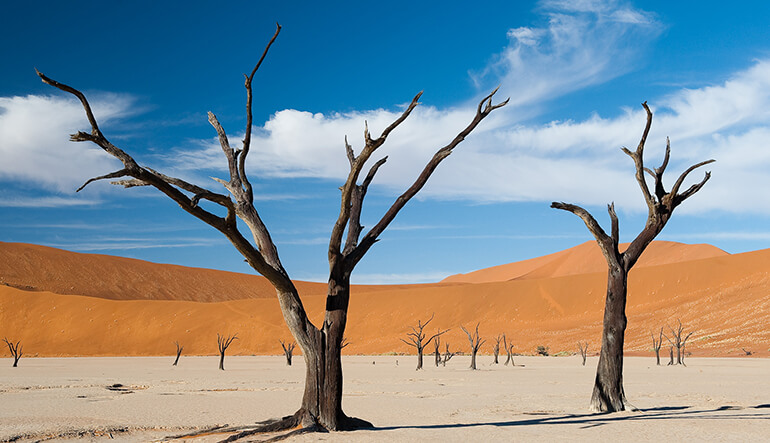
Conservation in Namibia
Namibia takes conservation very seriously and was the first country in Africa to incorporate environmental protection into its constitution. With more than 43% of the country under conservation management, it’s no wonder Namibia is abundant in such incredible wildlife. Local communities are benefitting from it too, as the government has allowed them rights to manage their wildlife through communal conservancies, promoting sustainable tourism and incorporating Namibia’s people and their culture and heritage into the country’s tourist industry.
Namibia boasts the largest population of free-roaming black rhinos and cheetahs in Africa, and the remarkable conservation efforts of this country saw elephant populations more than double to 16,000-strong between 1995 and 2008. It has been hailed as one of the greatest wildlife success stories in Africa.
When to Travel to Namibia
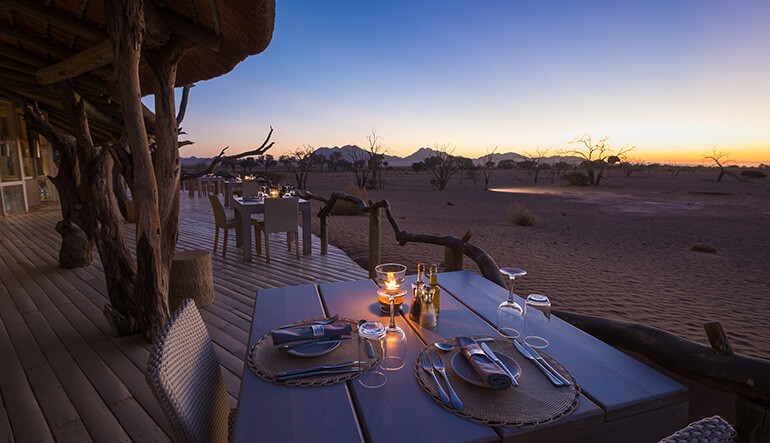
All Year
Boasting more than 300 days of sunshine a year, it’s difficult to choose the best time of year to visit Namibia. Game viewing in Namibia’s Etosha National Park is best in the cooler, drier months from June to October when animals converge around waterholes and the sun is lower in the sky. Nighttime temperatures can plummet and the air gets incredibly dry so be sure to stock up on moisturiser and lip balms if travelling around this time.
The summer months from November through to March are the hottest, and it goes without saying that sunscreen and a good protective hat are a must. Further north in the lush plains of the Caprivi, the heavy rains create a tropical landscape where the humidity remains all year round.


Accommodation in Namibia

From the arid Eden of the Kalahari and the Namib to the lush waterways of the Caprivi, Namibia offers visitors an African experience like no other. Accommodation options are just as varied and travellers can soak up the incredible Omboroko Mountains as a backdrop at Okonjima Plains Camp in the heart of Namibia. Enjoy walking safaris, game drives, bushman walking trails and bird watching at this little slice of paradise. Serra Cafema Camp in Kaokaland treats guests to an oasis experience where the Kunene River meets the remote desert landscape.
Little Ongava Lodge boasts the utmost in privacy and exclusivity in the Ongava Game Reserve, bordering Etosha National Park, while the five-star Little Kulala Lodge offers guests a range of excursions and activities in an idyllic desert setting in Sossusvlei.
View all accommodation in Namibia.
Things to do in Namibia
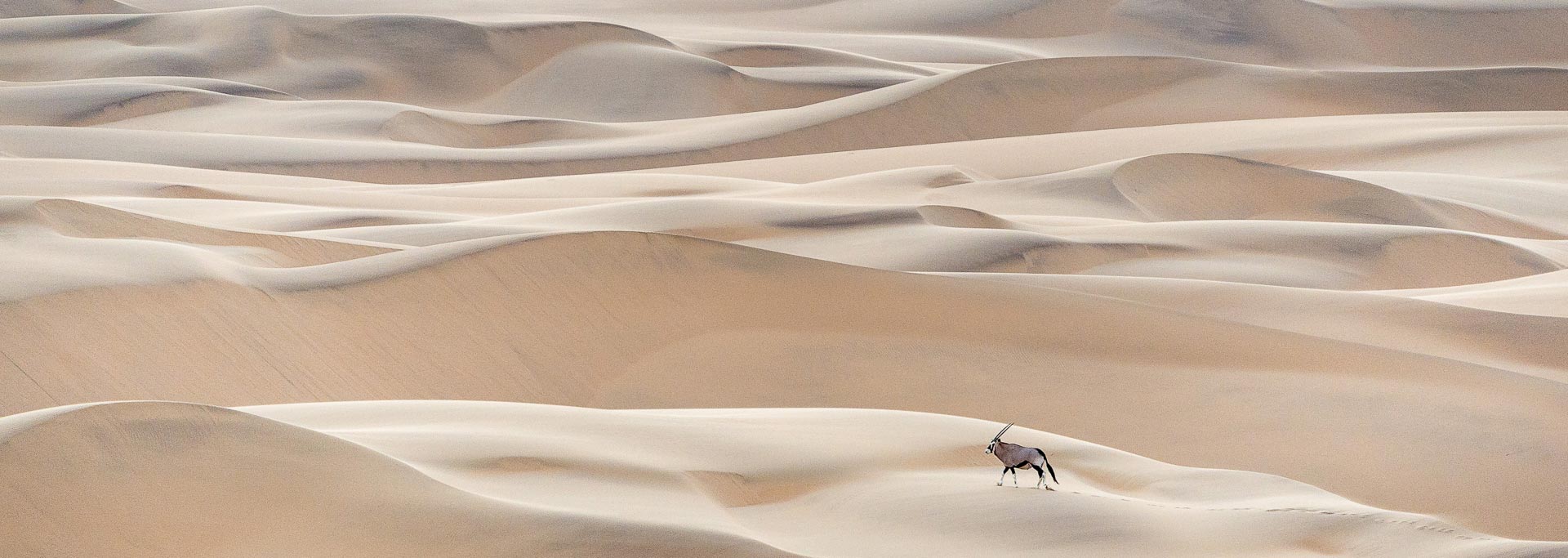
You may have already guessed that Namibia is an adventure enthusiast’s playground. With vast deserts, wild, rugged coastline, incredible rock formations and a network of rivers that provide endless water activities, travellers need look no further than Namibia for a unique African vacation.
Animal lovers who visit Namibia to catch a glimpse of some of the rarest wildlife in Africa in the iconic Etosha National Park, which gets its name from the Etosha pan that makes up 23% of the park’s area. Home to lions, elephant, leopard, cheetah, black and white rhino, and a host of other animals, travellers will delight in the game viewing opportunities.
Further north in the Caprivi Strip, visitors can enjoy exploring the rivers of this lush, tropical corner of Namibia. Hippos, elephant and crocodiles spend their days in the water while travellers looking to catch the big one can try their hand at tiger fishing, a popular activity in this region.
The deserts provide plenty of fun, too. On the 6-day Namibian Desert Explorer Safari tour travellers can quad bike across the rolling dunes of the Namib Desert or enjoy a hot air balloon ride to view the desert plains from above. Climb ‘Big Daddy’ the world’s highest sand dune in Sossusvlei, or walk amongst the petrified trees at Deadvlei and marvel at the landscape that seems otherworldly. Travellers keen on learning more about the culture can spend time with the people of the Himba village in the riverside destination of Kaokoveld and, after a long day of exploring, relax and unwind under the starry Africa night skies.
Need help? Talk to an expert!
Contact African Travel Canvas and we’ll help you book your dream vacation to Africa!

